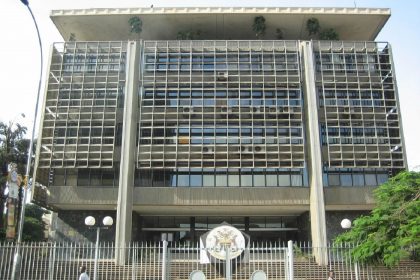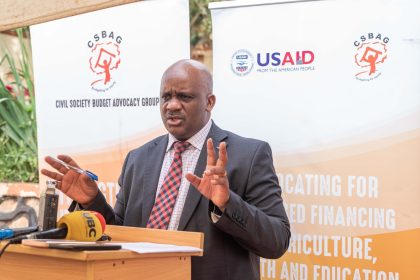Bank of Uganda errs on caution to maintain 10 pc base rate
 The Bank of Uganda said the strong industrial and service output growth more than offset a decline in growth of the agricultural output.
The Bank of Uganda said the strong industrial and service output growth more than offset a decline in growth of the agricultural output.
Bank of Uganda has maintained the Central Bank Rate (CBR) at 10 pc based on the continued uncertainty surrounding the country’s economic outlook. The CBR is a policy interest rate which is regularly reviewed and set by Bank of Uganda to influence pricing of financial assets in the economy such as loans, exchange rate and mortgages.
Early this week, the Monetary Policy Committee (MPC) chaired by Deputy Governor Michael Atingo-Ego, announced that the current CBR would contain domestic demand pressures, while accommodating and supporting economic recovery.
“The Bank of Uganda project economic growth in the range of five to 5.6 pc in financial year 2022/23. Increased external demand for exports, a significant rebound in foreign direct and private investment which is reflected in strong growth in the quarterly industry and services output and better supply-chain conditions, are expected to support modestly higher economic growth in the near term,” Atingo-Ego said in a statement on Monday.
However, he said Uganda’s economic growth is projected to remain below its long term trend until FY 2025/26. “Moreover, the growth outlook is subject to downside risks, including lower than expected global growth, lower commodity prices, unfavourable weather conditions, a resurgence of supply chain distortions due to potential escalation of geo-political tensions and the risk of higher domestic inflation which will necessitate for monetary policy tightening,” Atingo-Ego said.
Annual headline and core inflation increased to 10.4 pc and 9.0 pc in January 2023 from 10.2 pc and 8.4pc, respectively in December 2022. The increase in inflation was largely driven by base effects arising from a significant drop in public transport fares in January 2022 after the Government allowed full-capacity carriage following the reopening of the economy.
The increase in inflation is therefore expected to be short-lived. Indeed, the average month-on month headline inflation was zero percent in the three months to January 2023 compared to an average monthly increase of 1.1 pc in the three months to October 2022. Similarly, month-on month core inflation averaged 0.1 percent in the three months to January 2023, a decline from an average of 0.9 percent in the three months to October 2022. Inflation is expected to continue declining in the months ahead due to lower energy prices, improved global supply chains, exchange rate stability supported by tight monetary conditions, and moderate demand pressures due to tight monetary and fiscal policies. The headline and core inflation are expected to average 6.5 pc and 5.6 pc, respectively in 2023. Core inflation is projected to return to the 5% target by end of 2023.
The latest quarterly GDP data from the Uganda Bureau of Statistics (UBoS) revealed stronger than expected economic growth in the three quarters of 2022, averaging 6 pc. Strong industrial and service output growth more than offset a decline in growth of the agricultural output.
Similarly, the Composite Index of Economic Activity (CIBA), a high-frequency indicator of activity, points to a 1.5 pc growth in the second quarter of the FY 2022/23, up from 0.3 pc in the previous quarter. Also, business sentiments have improved since the MPC meeting of December 2022.

 Unpacking results-based financing: balancing strengths with weaknesses
Unpacking results-based financing: balancing strengths with weaknesses
 Mergers and degradations predicted as Uganda lenders move to comply with higher capital thresholds
Mergers and degradations predicted as Uganda lenders move to comply with higher capital thresholds
 Regional tentative policy to govern cross-border labour gets approval
Regional tentative policy to govern cross-border labour gets approval
 Uganda on edge of debt distress, needs 35 years to settle domestic arrears
Uganda on edge of debt distress, needs 35 years to settle domestic arrears
 Uganda raises purity standards for tin exports
Uganda raises purity standards for tin exports
 CSBAG warns fiscal indiscipline and runaway graft a threat to Uganda’s economic recovery
CSBAG warns fiscal indiscipline and runaway graft a threat to Uganda’s economic recovery
